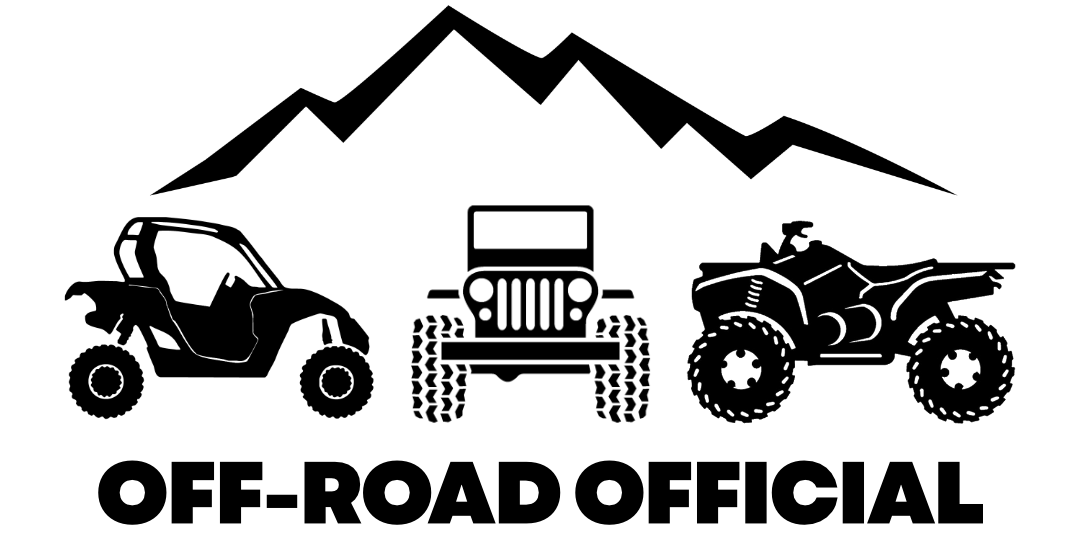Throw “Kawasaki” in before the name of any ATV model, and it instantly becomes credible in the eyes of consumers. And with good reason.
But while the Brute Force 300 may not be a true Kawasaki, it still lives up to the Kawasaki reputation.
And from a price to performance perspective, it ranks among the best ATVs you can buy for the money.
Even so, it shouldn’t be overlooked that these quads do have their drawbacks in the form of some common Kawasaki Brute Force 300 problems that include:
- Intake valves causing running issues
- Tippy when cornering
- Parking brake wears down the brake disc
- Carburetor causing starting issues
- Gears sticking, slipping, and grinding
- Overheating
This guide will detail each issue and proven ways to prevent them and overcome them when they occur.
Intake Valves Causing Running Issues
The intake valves used in the Brute Force 300 aren’t of the highest quality to start with, but they also tend to require more maintenance than the valves in similar models might.
Some of the negative symptoms caused by the intake valves are the following:
- Hard starting
- Rough idling
- Stalling
- Backfiring
The motors in the Brute Force models are notorious for sucking in about as much air as any ATV out there, so if you’re not cleaning your air filter every ten hours of riding or so you can bet these issues will flare up.
Along with this air comes debris like dirt and dust, which will wear down the intake valves over time. This problem also affects the Brute Force 650.
Constant wear will tighten these valves up to the point of compression loss, which is a common cause of the symptoms above.
Fixes
You should be checking the valve clearance of both your intake and exhaust valves often to ensure they’re set to their proper clearances.
If you want to keep your Brute running at top performance, you should go ahead and replace the valves every couple of years as well.
If you think the valves may be causing your running problems, do a compression test of leak-down test on the valves to determine this.
Tippy When Cornering
When the Brute Force 300 is near top speed, it’s know to be a bit tippy when cornering or really even turning slightly, similar to one of the problem with the Kawasaki Prairie 360.
Much of this has to do with the fact that this is a smaller model, and its width doesn’t quite offer the same stability as the bigger models do.
But the smaller stock tires on this model don’t help either.
Fixes
The only real way to make this model a bit more stable is to upgrade to bigger and wider tires, or to add some wheel spacers or aftermarket wheels with a little more offset equal to the stock spacers.
Parking Brake Wears Down The Brake Disc
There’s no Park setting in the Brute Force 300’s transmission, so you’ll need to use the parking brake pretty much any time the ATV is stopped to prevent it from rolling.
But there’s no warning light to alert you that your parking brake is still on when you start your Brute back up, which leads to many owners forgetting and driving off with the parking brake still engaged.
Driving with the parking brake on for even a short distance will smoke your rear left rear brake disc pretty quickly.
Fixes
The only real fix for this is to tighten your parking brake cable up enough so that it’s almost impossible to drive off with it engaged.
Carburetor Causing Starting Issues
One of the weaknesses of this model is the fact that it’s equipped with a carburetor rather than EFI like most other ATVs these days.
The stock carb in the Brute Force 300 is known to causing some starting and running issues, including the following:
- Engine sputters or stalls at idle
- Engine refuses to start or run without choke
- Engine surges
Brute Force 300 carburetor problems are unfortunately fairly common as carburetors have a tendency to gum up and clog over time for a variety of reasons.
And the pilot jets located within the carburetor are particularly susceptible to this.
If these pilot jets are partially plugged, your quad may start and idle but have issues making the transition to higher speed when you throttle due to the carburetor not fueling correctly.
Fixes
A thorough cleaning of the carburetor can help to resolve these issues, but pay close attention to the pilot jets located inside as well.
In order to extensively clean the carburetor, you’ll need to first remove it from your quad and disassemble it.
Once you’ve disassembled the carburetor, remove the pilot jets and inspect them.
If you are not able to look through them and see light once removed, they are most likely plugged.
Use a fine wire to unplug them, then spray through them with WD-40 Carb Cleaner afterwards.
Many starting and idling issues in the Brute Force 300 have been shored up by unclogging the jets in the carb.
Additionally, cover your ATV whether it’s parked outside or inside, which will help prevent the carb and its jets from plugging.
Gears Sticking, Slipping & Grinding
The transmissions in the Brute Force 300 can be another source of frustration among owners.
The transmission causes issues such as:
- Slipping in and out of gear
- Gear shift sticking when making a shift
- Grinding when shifting gears
These symptoms occur in the Brute Force 750 as well, and are all tell-tale signs of one of the following:
- Shift linkage needs an adjustment
- Motor mount bolts need to be re-tightened
Fix: Shift Linkage Needs An Adjustment
The shift linkages are notorious for moving out of place in these models, mainly due to the lock nuts that hold them in place vibrating loose over time.
This leads to many of the symptoms above, and you’ll need to adjust the shift linkage back into its correct position to alleviate them.
You can do this by following the steps below:
- Locate the shift linkage in the engine bay
- Fully loosen the two locking nuts on either side of the turnbuckle
- Rotate the turnbuckle and shift it left or right depending on which way it has moved
- Turn on the ignition and shift gears, ensuring the gear indicator matches up with the proper gear as you shift
- Tighten the locking nuts back in place
Note that you may need to make a few adjustments before getting it exactly right.
Fix: Motor Mount Bolts
The motor mount bolts should also be inspected, as they have been known to loosen and cause issues with the gears.
Go over each of them and ensure they are fully tightened, even well over the recommended torque setting in the owner’s manual.
Overheating
These models are equipped with a Kymco engine, which is also used in some Tracker ATVs.
While the engine is as solid as they come, it is prone to overheating – usually thanks to one of the following:
- Fan doesn’t engage in time
- Radiator is caked with dried mud
- Air bubble in the coolant system
- Blown head gasket
Fan Doesn’t Engage In Time
The Brute Force 300 electronic control unit comes programmed initially so that the cooling fan won’t engage until the engine reaches temperatures of over 200 degrees.
This often doesn’t leave the fan enough room to keep the engine under 220 degrees once it kicks on, at which point it’s in overheating range.
This is especially problematic when riding on hot days or at high elevations.
There are a couple ways to overcome this:
- Have the ECU tuned
- Install a toggle switch
Tune The ECU
A tune of the ECU usually comes with the added benefit of reprogramming the cooling fan to engage at temps of around 190 degrees, giving them more room to do their job and keep the engine in the safety zone.
This should eliminate most overheating issues.
Install A Toggle Switch
Installing a toggle switch on the dash is another way to stop this overheating, as the switch will be wired directly to the fan and give you the ability to turn it on as you please.
Radiator Is Caked With Dry Mud
You should be cleaning your radiator fins and grill after any muddy ride to prevent mud from caking and drying on the radiator, which can lead to overheating.
You’ll be shocked at the amount of mud, dirt, and other debris that finds its way into the depths of your radiator while riding.
Apply some HVAC coil cleaner and spray it off, which is totally safe and will ensure your radiator is clean of all that hard-to-reach gunk.
Air Bubble In The Coolant System
If your engine comes close to overheating or overheats, it’s prone to letting air into the system.
When an air bubble forms in your coolant system, it blocks the coolant from properly pumping and cooling.
You’ll need to bleed your ATV of this air bubble, or it will continue to overheat until you do.
Blown Head Gasket
Your head gaskets are at risk of blowing any time the engine overheats as well.
When a head gasket blows, it will lead to a maddening cycle of continuned overheating.
You’ll need to use a head gasket test kit to determine if this is the cause of your overheating, and replace your head gasket if so.
Conclusion
As durable and reliable as this quad is, it’s important to consider that as an owner you may still run into some of these common issues.
While these models won’t keep up with the fastest ATVs in the industry, when in peak condition they offer surprisingly good recreational appeal to go along with their working ability.


